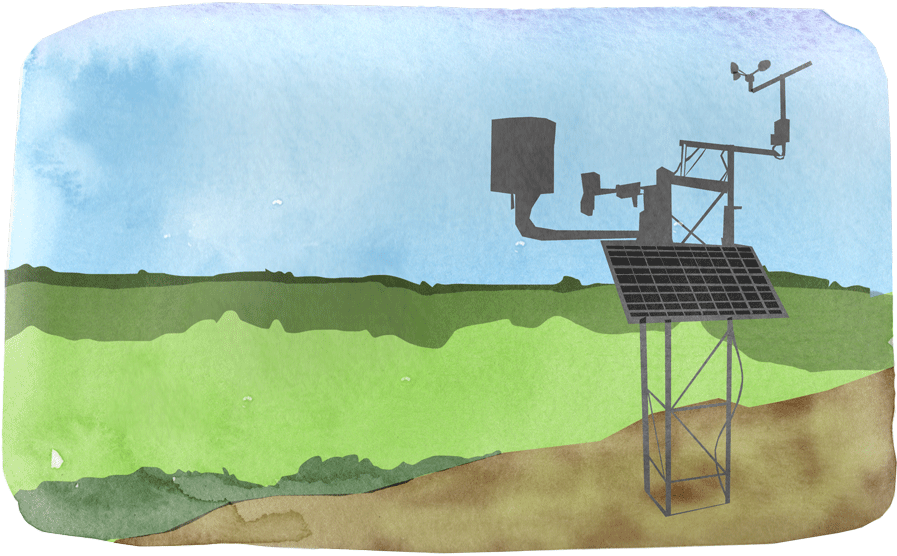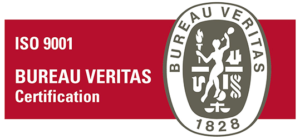Even when built using high-quality technology and sensors, meteorological monitoring networks can produce data characterised by limited representativeness, or data which does not completely fulfil the purpose or is not yet able to satisfy one of the main requirements of an extended monitoring network, i.e.: the multi-purpose use of the observations collected. This last aspect is important, as it is often able to make a significant contribution to initial investments and subsequent running costs, whether these are expressed in direct financial terms or in more general terms of profitable effects on other value aggregators and consequently GDP, as in the case of public networks.
This situation is generally due to shortcomings in design and supervision of works, and sometimes to the direct assignment of the installation of the networks to the same suppliers. This results in the non-compliance of some installation sites with the guidelines of the WMO (World Meteorological Organization of the United Nations, the global standard-setting body for meteorology and operational hydrology).
Operating in this market, Radarmeteo has been able to detect this system weakness in various contexts and this has led to the development of a specific service dedicated to the design of meteorological networks and to the enhancement and compliance of existing networks. The final aim of these activities is the certification of these networks in compliance with WMO standards, optimising their use and validity and, in short, the value of their data, in every context of use, be it technical, evidential or reanalytical.
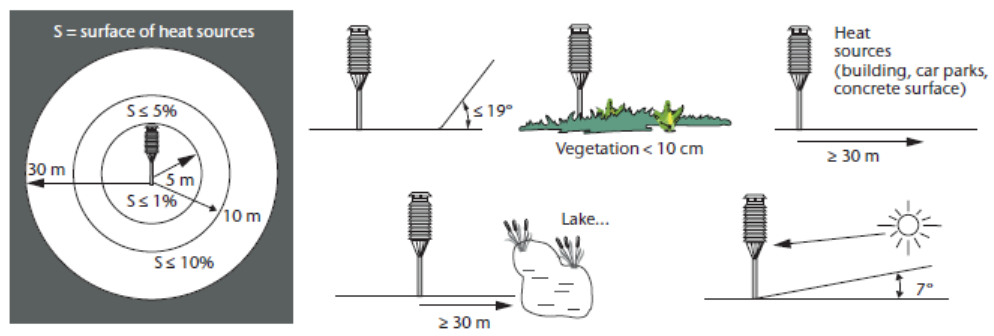
KEY ACTIVITIES
The projects are structured as follows:
- for new networks, the complete design, including all the administrative and technical documentation necessary for tenders or reporting;
- for the enhancement and compliance of existing networks:
- analysis of existing conditions, assessment of quality and indications for compliance;
- executive technical indications, supervision of works and commissioning;
- technical, economic and administrative assistance;
- training of personnel responsible for carrying out routine maintenance;
- data control methods, validation and the alert system which is triggered in the case of sensor malfunction;
- for certifications:
- all the activities mentioned in the previous point;
- selection and choice of the certification body;
- preparation of all the documentation and technical-administrative support for the audit of the certification body;
- support and accompaniment in all stages of the process, through to the attainment of certification.
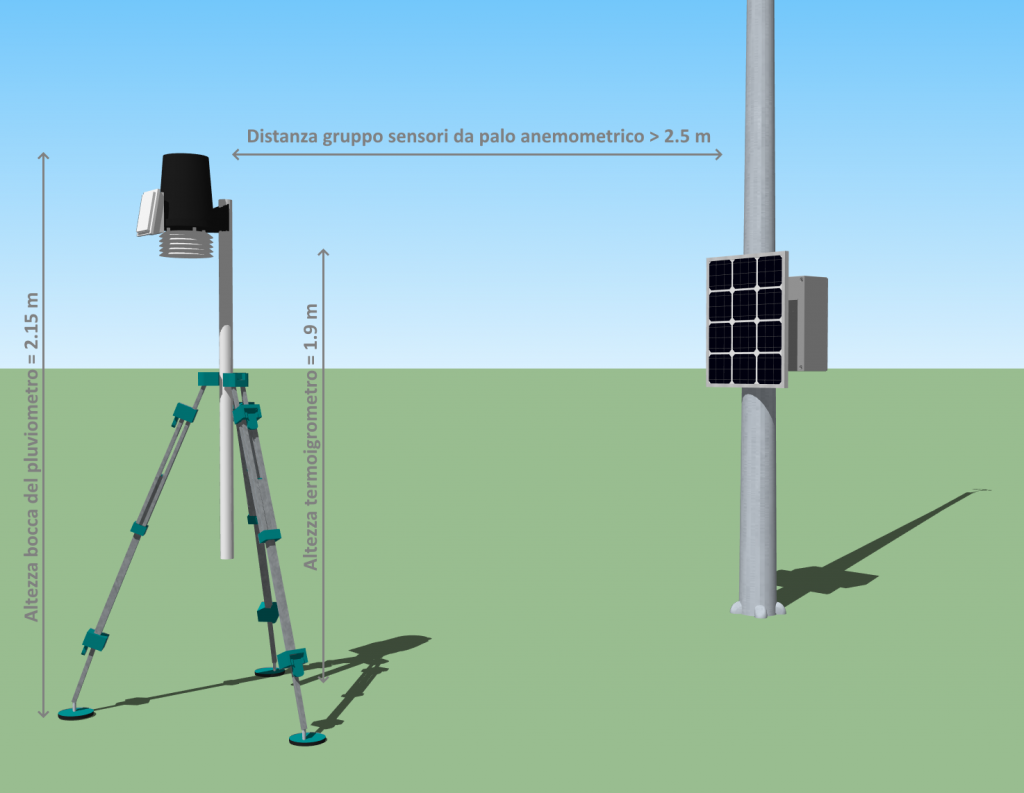
RESULTS
At the end of the project the Client will have a meteorological monitoring network that:
- is efficient and representative and supplies high-quality data;
- is certified in compliance with WMO guidelines;
- is capable of generating data for all operational activities, for feeding Decision Support Systems (DSS), and also for all ex-post applications;
- is suitable for all legal meteorology applications, with data providing evidence in both the technical-scientific and legal-administrative context;
- is suitable for analyses connected to risk management;
- can be integrated with official meteorological monitoring systems (e.g.: ARPA).
Many companies and bodies operating throughout the territory, such as land reclamation authorities, utilities and anti-hail authorities, have made this choice, and the monitoring framework on the Veneto plain has now changed radically, presenting an advanced and certified network system, capable of meeting all meteorological requirements.
The technical description of the service can be downloaded at this link.
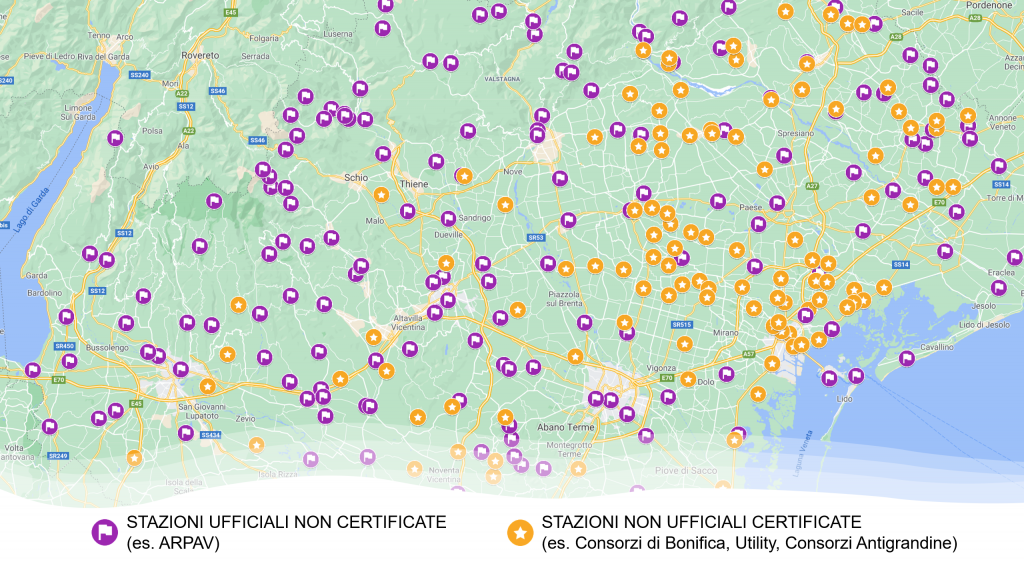
Comments are closed.

